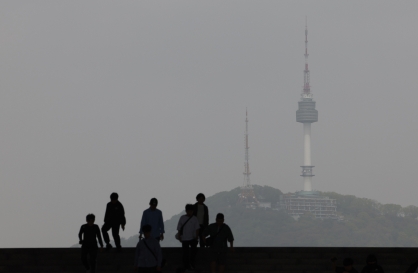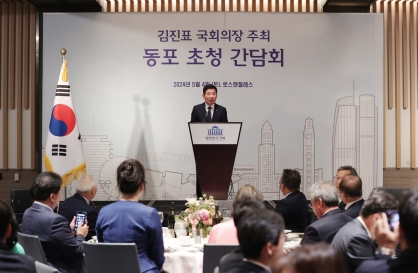[Editorial] Negative growth
Export rebound seems inaccessible on short-term stimulus
By 김케빈도현Published : Oct. 4, 2016 - 17:41
Economy-related ministries had said that the nation would see a rebound in exports this year, predicting a 2.1 percent increase on-year. But exports for the first nine months dropped 8.5 percent over the same period last year.
On a monthly basis, exports fell 5.9 percent in September from a year before. Over the past 20 months, the export sector has experienced 19 months of negative growth with the exception of August 2016 when compared to the same month in the previous year.
Given the unfavorable factors and uncertainties at home and abroad, chances are slim that shipments to overseas markets will post a yearly increase via a rapid bounce-back in the coming three months.
Domestically the negative factors include the financial woes of Hanjin Shipping, the recall of the Galaxy Note 7 by Samsung Electronics, and the Hyundai Motor union’s strike.
As for the external factors, slowdowns in the eurozone and China are hampering South Korean exports despite its two major trade partners’ efforts to boost their economies. The volatile prices of crude and the fluctuation of the US dollar have also been a burden for exporters. In addition, plant construction firms are still suffering from a drop in overseas orders for petroleum development.
The unstable business environments at home and abroad were linked to a sharp drop in the manufacturing sector’s factory operations rate from 73.8 percent in July to 70.4 percent in August. Though it was somewhat due to seasonal factors during summer, the figure has approached the critical level of 69.9 percent, which was recorded during the 2008-09 global financial crisis.
Over the past two years, the government, reportedly in close policy coordination with the central bank, has mobilized both stimulus packages through a series of supplementary budgets and monetary easing.
The Finance Ministry and the Bank of Korea do not seem to have more practical policy cards in vitalizing the sagging exports as long as global indices do not improve. Any further extra budget or key rate cut are too risky when weakening fiscal soundness and snowballing household debt are contemplated.
It is anachronistic to depend on favorable global indices or state-led emergency prescriptions. A more important role of the ministry and the central bank is to make the economy more resilient to negative external factors by conducting preemptive countermeasures. The government has been busy in generating makeshifts whenever external shocks hit the economy.
There is an urgent need for the nation to develop new innovative products to replace items that have led its exports over the past decades. There has been no change in its top 13 export items since 2006.
Overseas shipments of those key products, including smartphones, home appliances, automobiles and steel, have shrunk leading the overall export decrease rate over the past two years.
Korea has lagged behind major advanced countries, such as the US and Germany, in the development of futuristic products like electric-powered vehicles or artificial intelligence-oriented home appliances. The nation also has to make strenuous efforts in environmentally-friendly technology if it wants to catch up with the global standards.
The drastic restructuring is underway in the shipbuilding and shipping sector and the Corporate Vitality Enhancement Act took effect in August. Manufacturers should make the best of these opportunities for streamlining ailing business segments by merging affiliates with similar functions.
Cost reductions via overall restructuring could be the steppingstone for the corporate sector to acquire the capacity it needs to sufficiently invest in research and development.
Unless there is a fundamental change in the aftermath of the current slump, the nation’s exports may continue to shrink in the coming decade.
On a monthly basis, exports fell 5.9 percent in September from a year before. Over the past 20 months, the export sector has experienced 19 months of negative growth with the exception of August 2016 when compared to the same month in the previous year.
Given the unfavorable factors and uncertainties at home and abroad, chances are slim that shipments to overseas markets will post a yearly increase via a rapid bounce-back in the coming three months.
Domestically the negative factors include the financial woes of Hanjin Shipping, the recall of the Galaxy Note 7 by Samsung Electronics, and the Hyundai Motor union’s strike.
As for the external factors, slowdowns in the eurozone and China are hampering South Korean exports despite its two major trade partners’ efforts to boost their economies. The volatile prices of crude and the fluctuation of the US dollar have also been a burden for exporters. In addition, plant construction firms are still suffering from a drop in overseas orders for petroleum development.
The unstable business environments at home and abroad were linked to a sharp drop in the manufacturing sector’s factory operations rate from 73.8 percent in July to 70.4 percent in August. Though it was somewhat due to seasonal factors during summer, the figure has approached the critical level of 69.9 percent, which was recorded during the 2008-09 global financial crisis.
Over the past two years, the government, reportedly in close policy coordination with the central bank, has mobilized both stimulus packages through a series of supplementary budgets and monetary easing.
The Finance Ministry and the Bank of Korea do not seem to have more practical policy cards in vitalizing the sagging exports as long as global indices do not improve. Any further extra budget or key rate cut are too risky when weakening fiscal soundness and snowballing household debt are contemplated.
It is anachronistic to depend on favorable global indices or state-led emergency prescriptions. A more important role of the ministry and the central bank is to make the economy more resilient to negative external factors by conducting preemptive countermeasures. The government has been busy in generating makeshifts whenever external shocks hit the economy.
There is an urgent need for the nation to develop new innovative products to replace items that have led its exports over the past decades. There has been no change in its top 13 export items since 2006.
Overseas shipments of those key products, including smartphones, home appliances, automobiles and steel, have shrunk leading the overall export decrease rate over the past two years.
Korea has lagged behind major advanced countries, such as the US and Germany, in the development of futuristic products like electric-powered vehicles or artificial intelligence-oriented home appliances. The nation also has to make strenuous efforts in environmentally-friendly technology if it wants to catch up with the global standards.
The drastic restructuring is underway in the shipbuilding and shipping sector and the Corporate Vitality Enhancement Act took effect in August. Manufacturers should make the best of these opportunities for streamlining ailing business segments by merging affiliates with similar functions.
Cost reductions via overall restructuring could be the steppingstone for the corporate sector to acquire the capacity it needs to sufficiently invest in research and development.
Unless there is a fundamental change in the aftermath of the current slump, the nation’s exports may continue to shrink in the coming decade.



![[AtoZ Korean Mind] Does your job define who you are? Should it?](http://res.heraldm.com/phpwas/restmb_idxmake.php?idx=644&simg=/content/image/2024/05/06/20240506050099_0.jpg&u=)














